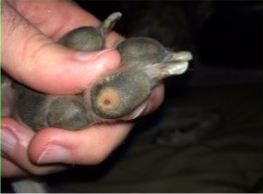Vet’s Corner – What Makes Greyhounds Unique?- A Vet Perspective
Greyhounds are one of a kind. Their sweet-nature, adaptability and laid-back attitude makes them suitable for all kinds of families and situations. Not only are they unique dogs in terms of temperament, they also come with a number of anatomical and physiological differences.
Red blood cells
Greyhounds are built for relatively short bursts of speed. To facilitate the huge oxygen demand of body tissues during a race, a greyhound’s blood has adapted so that it has a higher concentration of red blood cells with a higher concentration of haemoglobin in. This way, a smaller volume of blood is able to deliver a larger volume of oxygen to the muscles.
Body fat
Much of the greyhound’s sleek appearance is owed to its general lack of bodyfat. A greyhound’s body fat percentage is around 17% compared to approximately 35% in other dog breeds. This lack of insulation means that it is important for owners to provide their greyhound with a warm, soft bed and a coat for winter walks. Great care is also taken by vets/nurses when greyhounds are under anaesthetic with the use of heat pads, blankets, bubble-wrap and many more!
Delayed bleeding
Research shows that a proportion of greyhounds have a higher tendency to suffer from bleeding or bruising after trauma or surgery. The bleeding often occurs around 36 to 48 hours after the procedure or trauma incident. The problem is known as “fibrinolytic syndrome” which results in a weaker clot strength. Due to this tendency for clots to break down, some vets recommend treatment of greyhounds with an antifibrinolytic agent, known as tranexamic acid, after a surgical procedure.
Corns
Greyhounds often develop corns on their foot pads. Corns are painful lesions made up of excess keratin, similar to those seen on human feet. Greyhounds with corns are generally lame on the affected foot and are especially reluctant to walk on hard surfaces.
A small round lesion may be visible on the pad which is painful when pressure is applied.
References/websites:The exact cause of corns in greyhounds is unknown but it is thought scar tissue, warts and/or injuries can contribute to their formation. Corns can be treated in a number of ways from providing boots to surgical excision.
https://www.ncbi.nlm.nih.gov/pmc/articles/PMC3816276/#R4
https://www.vettimes.co.uk/app/uploads/wp-post-to-pdf-enhanced-cache/1/when-its-not-just-a-dog-aspects-of-anaesthesia-in-retired-greyhounds.pdf
https://www.vettimes.co.uk/article/delayed-postoperative-bleeding-in-greyhounds/?format=pdf
http://veterinarymedicine.dvm360.com/paw-pad-pain-review-corns-dogs?id=&sk=&date=&pageID=3
Written by Dr Emma Smith on behalf of Willett House Vets LTD
